Vignale
|
1946 - 1974 |
Country: |
 |
|
The Vignale Family
Alfredo Vignale was born in Turin on 15 June, 1913, the fourth of seven children, and after leaving school at the age of eleven began work as a helper in a local sheet-metal shop. The young Vignale was a 'natural' panel-beater, completely drawn to the developing car industry. Indeed the whole Vignale family was involved with car bodywork, with his father and his brothers, Eusebio and Guglielmo, already employed as car painters.
Pininfarina and Alessio of Turin
Young Alfredo was sufficient of a craftsman, however, to gain employment with Pininfarina at the tender age of seventeen, working in the Corso Trapani. It was in fact a 'copycat' move - Farina himself had left school at eleven to work in his brother's carriage repair business, and had subsequently been trained by one of the established masters of coach-building, Alessio of Turin.
And just as a Farina family firm, Stabilimenti Farina, developed out of the involvement of brothers in car-making, so the Vignale family came together in 1939 when the brothers established a small workshop in Turin's Gruliasco district. They were ambitious to add their name to the growing list of Italian coach-building firms, which were, sadly, still relatively unknown outside their own country for several reasons; not the least of which was lack of an Italian middle-class to provide a big automotive market, and the French domination of European styling.
The Italians
Still, these firms were well respected in car-conscious Italy. The war delayed Vignale plans, but in 1946 a small workshop was again equipped and staffed by a handful of craftsmen, many of them Alfredo's former workmates attracted by the idea of independence from the big Pininfarina concern. Historically this proved to be the right time for firms like Vignale to launch themselves, because while the rest of Europe set about restoring its personal transportation system with fairly plebian cars, Italy blossomed.
The Italians, more motoring-mad than most other countries and reacting with typical Latin excitement to the end of wartime greyness and shortage, were ripe to express themselves on the roads. And the vast Fiat organisation; just in the process of mobilizing Italy again, provided the means (Alfa Romeo and Lancia production was minute by comparison).
The Italian Carozzeria
The Italian Carozzeria had several things on their minds. The last big motor-racing event before the lights went out over Europe had been the 1940 Circuit of Brescia, dominated by lightweight 328 BMWs in open and closed coupe form - a bit slab-sided, but well proportioned and of clean outline, and built for the German firm by Superleggera Touring of Italy. The thinking behind these cars had considerable effect on the Italian designers. They also had Detroit designs of the early forties before them with their strong (if brash) styling of grilles and bonnets, and providing tangible proof of the great moulding possibilities of plastic.
Logical progress based on these influences, together with Italy's apparent willingness to put car styling high on the list of priorities, and also a renewed appetite around the world for exoticism, classicism and a whiff of the blue Mediterranean, assured Italian designers of a market. And they had something else in their favour too - the worldwide fascination of the
Mille Miglia, that breeding ground for high-speed
aerodynamic sports cars and superb shop window for the best of Italian design. The first post-war
Mille Miglia, in 1947, saw the only pre-war car, a 1938 2.9-litre Alfa-Romeo coupe, harried by Fiats and Fiat-based Cisitalias, and although the Alfa won, the little specialist-bodied coupes and roadsters from Italy had made their mark internationally.
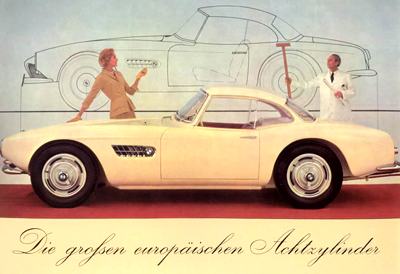 1956 Vignale BMW 507.
1956 Vignale BMW 507.
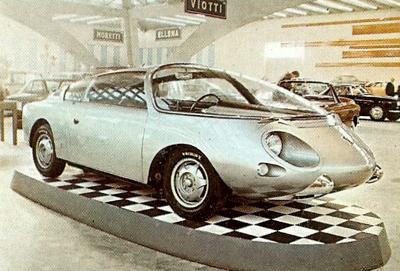 Vignale 1000 Record design prototype, with "fish-bowl" windscreen.
Vignale 1000 Record design prototype, with "fish-bowl" windscreen.
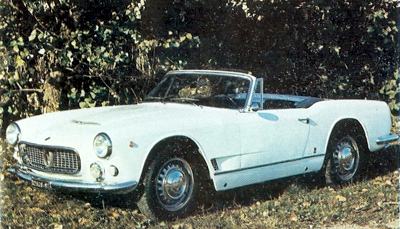 1965 Vignale Maserati Sebring Spyder.
1965 Vignale Maserati Sebring Spyder.
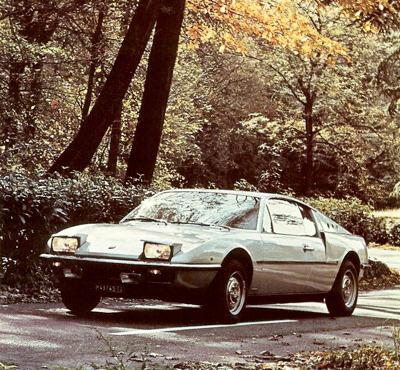 1968 Vignale version of the Matra 530.
1968 Vignale version of the Matra 530.
 1968 Vignale version of the Matra 530.
1968 Vignale version of the Matra 530.
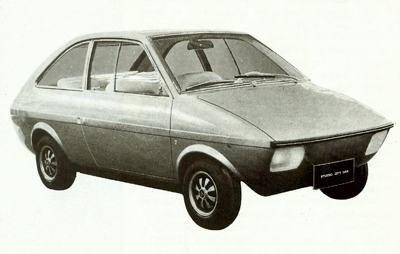 1970 Vignale De Tomaso City Car.
1970 Vignale De Tomaso City Car.
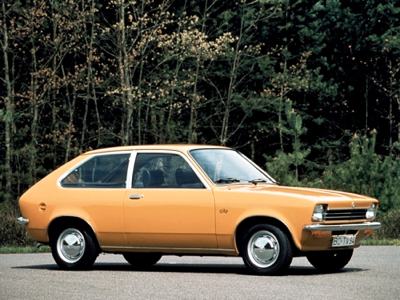 1973 Vignale Opel Kadett.
1973 Vignale Opel Kadett. |
Angelo Balma
It was in this atmosphere of excitement that Vignale prepared to launch his name. Now partnered by fellow-craftsman Angelo Balma, he had established a small workshop in the Via Cigliano, Turin, and had undertaken many types of light engineering fabrication outside the car field in order to get the business going. But car body building was his aim, and like many other aspiring coach builders in the area, he took the Fiat 500 as a basis. His first effort on a 500 was sufficiently interesting to attract international attention. He moved to bigger cars, and in 1948 he took a major styling prize with a drophead design on a Fiat 1500 - the
Grand Prix d'Europe at Juan les Pins.
Giovanni Michelotti
Carrozzeria Vignale had joined the ranks of Italy's recognised car body designers. A number of styling exercises and short runs followed on Fiat, Lancia and Ferrari chassis. Among Vignale's employees now was the young Giovanni Michelotti. His early work for his employer included some definite work on
radiator grille design, firstly on the 1949 V16
BRM grand prix car, and then for Ferrari with the 340 America Spyder. The elliptical orifice with cubed grille placed well back set the pattern for sports and sports-racing car frontal treatment through the 1950s.
It was work on Ferrari chassis that enabled Vignale to rise to substantial international fame at this time. Up to 1953 his works produced bodies for the Ferraris which won three Mille Miglias and one Carrera Panamericana. This was the dawning of sports-car racing's golden era, and of enormous public attention focussed on the results of important races. It was therefore highly desirable for the coach-builder to see the car he had styled score over those bearing rival firms' designs - for the style houses of Italy the Mille Miglia was not a contest between marques so much as a trial of which Ferrari (since Ferrari dominated the entry lists during this period) would provide the ultimate publicity for which body-builder.
Superleggera Touring Bodies
There was joy at Carrozzeria Vignale when their Berlinetta was driven to fifth place by Simon and Vincent in the 1952 Le Mans race, proving to be the sole-survivor of the four 4.1-litre Ferrari runners. But it was certainly surpassed by the celebration after the 1953 Mille Miglia, when three works Ferraris with Superleggera Touring bodies all retired and privately-entered Vignale-bodied Ferraris came first (Marzotto) and fourth (Cole). Italian designers - like other national groups of stylists - readily borrowed and adapted each others' ideas at this time.
An outstanding Vignale body for Ferrari's first 2.0-Iitre V12, the Type 250 Mille Miglia, was, for instance, unashamedly pinched by Alfredo's old employer, Pininfarina, the sole distinguishing difference being a squaring of the top windscreen corners. As a result of this cross-pollination, and in many cases downright plagiarism, the individual merits of the Italian styling houses were not widely apparent abroad, and for the public at large 'Italian styling' was a sufficient accolade in itself. As the taste for Italian styling swept Europe, some exponents of it were fortunate enough to link themselves with big manufacturers, but others found that the fame brought by motor sport publicity produced mainly orders for one-offs.
Princess Liliana de Rethy
Vignale, for example, never got into the mass-production big time. But individual styling and coach-building for the cognoscenti did have its own rewards, and one project often led to another. Vignale's special Ferrari for Princess Liliana de Rethy, for instance, led to work on an Aston Martin chassis for a Belgian customer, Baldovino, and that in turn provoked a wealthy New Jersey businessman to send him a Rolls-Royce chassis for special clothing. These toothsome individual cars, and his styling exercises on smaller cars at motor shows, earned for Vignale the description in the influential Italian publication 'Tuttosport' in April ,1954 as 'the most personal and independent artist we know - his style has nothing in common with others, he experiments both with fantasy and technique, and his cars first surprise and then convince you.'
But individuality in those days was very much in the eye of the Italian beholder. While Pininfarina dominated the 1950s with work for volume car makers, the smaller styling houses did have some outlets in popular cars. Boano was responsible for the
Renault Dauphine, while
Ghia did the Floride coupe and also the
Kharmann-Ghia coupe for VW. Bertone worked for
NSU. In Britain, Michelotti in due course established a reputation through the
Triumph Herald and subsequently through other work for Standard-Triumph.
Vignale carried out some consultancy work on the
Standard Vanguard Series 3. Vignale was however still a panel-beater at heart, and was therefore as interested in body-building as in styling. In 1961 he abandoned the small workshop in the Via Cigliano and moved to a 12,000 square metre factory behind the Fiat Mirafiore factory still in the Grugliasco district. Alfredo's brother Guiseppi was in charge of administration, his old partner Balma left the firm, and Balma's son Giovanni was appointed sales manager. Bigger though the firm was becoming, it was still very much 'in the family', and Vignale's interest and involvement was wholly personal and close.
Production of special
bodywork on Fiat floorpans and running gear was now the main operation, firstly on the
600, then on the
850, with sedan, coupe and spyder versions. While these provided the bread and butter, Vignale - like other styling houses - produced numerous experimental studies for car makers and also the now almost obligatory display of motor show prototypes to proclaim to the world, and hopefully to the car-manufacturing customers, how provocative a stylist Alfredo Vignale was. These were based on a variety of chassis.
In 1963 his work embraced the Fiat 1000,
Lancia Flavia and Sebring Maserati 3500 GTi. The following year he did a spyder version of the Maser, a Fiat 850, and a Compagno body on a
Daihatsu. 1965 saw a
coupe sportivo Fiat 850, and Coupe and Spyder versions of the
Opel Kadett. This year saw Vignale's first contact with the firm which was to give him one of his strongest connections with the British market. The management at Jensen was split over the replacement model for their C-V8, but it was eventually agreed that the new car should be styled and built in Italy. Design and development manager Kevin Beattie visited Ghia, Superleggera Touring and Vignale, and asked each to submit designs for the new car.
The Jensen Interceptor
Ghia were heavily involved with Chrysler at this time, and demanded a fee to divert their efforts to Jensen. Vignale produced a rather conventional-looking design - similar to that for the four-door Maserati Mexico which he had introduced at the 1965 Turin motor show, and Jensen were looking for a more dramatic treatment. This came from Touring, and Jensen liked it, but the Milan firm was in such a financial pickle that Jensen had no confidence in its ability to produce the car.
Jensen bought the. design outright, removed Touring's marks from the drawings, put Jensen's name on them, and took them along to Vignale as representing the sort of thing they had in mind. Even if Alfredo Vignale knew or guessed that Touring was the originator he said nothing, being anxious to secure the order for final styling and building. With the deal signed and the tooling arranged it took Vignale only four months to produce a
prototype car combining the proven C-V8 chassis and running gear and the new body. Within a further six months the first Italian-bodied, American-engined, British-built Jensen Interceptor was assembled at West Bromwich - one of the fastest international model operations then on record.
Vignale's part in it did not last long, however. By October 1966, when two or three trimmed and painted Interceptor bodies were already arriving from Turin each week, Jensen had already decided that the finish was not what they wanted, and that the Vignale arrangement was financially unsound and too long-range for comfort and logic. Vignale was bought off, and the jigs and press tools transferred to Britain. Jensen later admitted, however, that it took their own craftsmen a long time to match the flexibility and quality of work of the Italians.
Maserati Vignale Coupe
Vignale meanwhile maintained his styling name with design studies. Notwithstanding the untimely loss of the Jensen manufacturing contract he showed a very elegant Interceptor-based two-seater coupe design, the Nova, at the 1967 Geneva motor show. Then he returned to Maserati with an Indianapolis body at the 1968 Turin show and with his namesake, the 4200 Vignale coupe, the following year. Vignale continued to build on Fiat floorpans and mechanicals, and in 1967 his main models were marketed in Britain by a West London gaming company, F. Demetriou Group, of Queensway, W2.
Frixos Demetriou
This somewhat strange arrangement arose after Greek-Cypriot casino owner Frixos Demetriou became concerned about the security of his gaming licence in Britain. Seeking a watertight status as a 'legitimate businessman' in case his claim to operate his casino in Britain was challenged under a forthcoming review of the gaming laws, he decided to import cars, and signed an agreement with Vignale to become the sole UK concessionaire for Vignale models. A large car showroom next to Demetriou's Olympic Casino was bought, and a business partner, German-Swiss Ernest Huppert, ran the operation.
Four Vignale-Fiat models were marketed - the amusing and diminutive GaOine, based on the Fiat 500 floorpan and running gear but with drophead 'Noddy-car' body: the 850 Special Coupe based on the standard Fiat 850S but with two-plus-two body and full specification: the Eveline Coupe SL, a two-door four-seater using the Fiat 124 and again offering a full specification: and the Samantha, another two-door coupe, based on the Fiat 125 with luxurious specification and a five-speed gearbox option. All these cars had Turin-built steel bodies and combined reasonable accommodation with styling that was considerably more fetching than the three-box Fiat original bodies.
Demetriou arranged through Turin that Fiat (GB) should distribute and service the Vignale-Fiat cars - much to the annoyance of Fiat (GB) executives who were not a party to the agreement, who were suspicious of Vignale's work and its effect on warranty, and who feared that the cars would divert up-market Fiat customers away from the factory product. rumour has it that the Olympic Casino, where the import office was located, rang with many a multi-lingual arguments.
Importation continued for two years. Several hundred cars were sold, and considerable ambitions were harboured for the future, including participation in sedan car racing, to which end a transporter was bought and racing driver Nick Faure was tentatively engaged for the season. But in 1970 Demetriou's British gaming licence was renewed and he also secured new gaming outlets in Greece. His interest in the Vignale-Fiat project suddenly evaporated. Although the project had cost him an estimated £350,000, Demetrious was a wealthy man and had no hestitation in dropping the car business and going to Greece.
Demetrious died there shortly afterwards, crushed to death in the wreckage of a parked Vignale-Fiat which was run over by an army tank. In Turin meanwhile, insufficient work brought hard times at the Vignale factory, and when in 1969 Alessandro de Tomaso, president of Ghia, was shopping for factory space to build his Pantera cars to be marketed by the Ford Motor Company, he found a sad but resigned vendor in Alfredo Vignale. On 16 November 1969, the very day that he signed the agreement to sellout, Vignale died in a car crash near the factory. He was 56.
The factory then went into Pantera production, making 16 bodies a day and sending them to
DeTomaso at Modena for the assembly operation. In 1972 it seemed that the final trace of the Vignale origins was to go, as the factory became known as De Tomaso Automobili of Grugliasco. Respite came in 1973 when
Ghia was purchased by Ford and the whole De Tomaso operation was re-named Vignale. The Modena plant was closed at the same time, even a sit-in by ISO workers failed to secure its continued operation. Pantera production was then carried out for a period at the old Vignale Grugliasco factory - by then some 40,000 square metres - but due to the world recession of 1974 the factory was forced to close down at the end of the year with the loss of 200 jobs.



